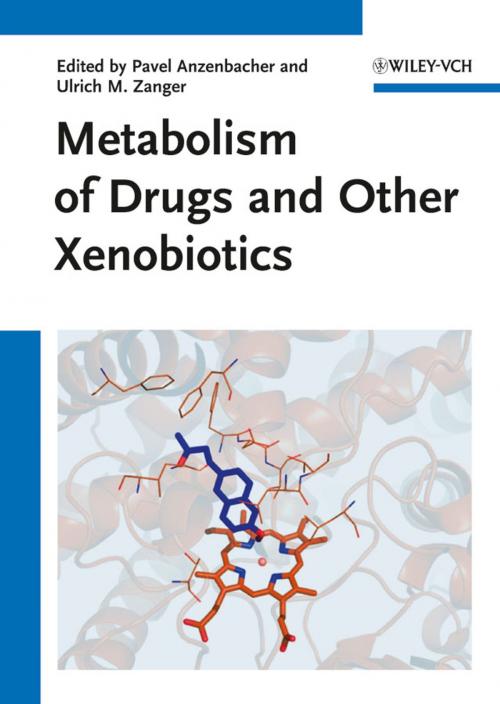Metabolism of Drugs and Other Xenobiotics
Nonfiction, Health & Well Being, Medical, Specialties, Toxicology| Author: | ISBN: | 9783527646326 | |
| Publisher: | Wiley | Publication: | February 23, 2012 |
| Imprint: | Wiley-VCH | Language: | English |
| Author: | |
| ISBN: | 9783527646326 |
| Publisher: | Wiley |
| Publication: | February 23, 2012 |
| Imprint: | Wiley-VCH |
| Language: | English |
A practice-oriented desktop reference for medical professionals, toxicologists and pharmaceutical researchers, this handbook provides
systematic coverage of the metabolic pathways of all major classes of xenobiotics in the human body. The first part comprehensively reviews
the main enzyme systems involved in biotransformation and how they are orchestrated in the body, while parts two to four cover the three
main classes of xenobiotics: drugs, natural products, environmental pollutants. The part on drugs includes more than 300 substances from
five major therapeutic groups (central nervous system, cardiovascular system, cancer, infection, and pain) as well as most drugs of abuse
including nicotine, alcohol and "designer" drugs. Selected, well-documented case studies from the most important xenobiotics classes illustrate general principles of metabolism, making this equally useful for teaching courses on pharmacology, drug metabolism or molecular
toxicology.
Of particular interest, and unique to this volume is the inclusion of a wide range of additional xenobiotic compounds, including food supplements, herbal preparations, and agrochemicals.
A practice-oriented desktop reference for medical professionals, toxicologists and pharmaceutical researchers, this handbook provides
systematic coverage of the metabolic pathways of all major classes of xenobiotics in the human body. The first part comprehensively reviews
the main enzyme systems involved in biotransformation and how they are orchestrated in the body, while parts two to four cover the three
main classes of xenobiotics: drugs, natural products, environmental pollutants. The part on drugs includes more than 300 substances from
five major therapeutic groups (central nervous system, cardiovascular system, cancer, infection, and pain) as well as most drugs of abuse
including nicotine, alcohol and "designer" drugs. Selected, well-documented case studies from the most important xenobiotics classes illustrate general principles of metabolism, making this equally useful for teaching courses on pharmacology, drug metabolism or molecular
toxicology.
Of particular interest, and unique to this volume is the inclusion of a wide range of additional xenobiotic compounds, including food supplements, herbal preparations, and agrochemicals.















